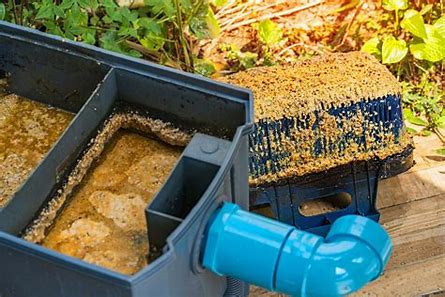Landscaping involves planting and caring for plants, as well as altering outdoor spaces with hardscapes like paths, patios, and decorative mulch. A good landscape enhances curb appeal, increases property value, and provides environmental benefits.
A sustainable landscape reduces the need for chemicals, watering, and mowing. It also provides habitats for wildlife and protects soil erosion. Contact Landscaping Fayetteville AR for professional help.
Whether you’re landscaping an entire lawn or replacing damaged areas, sod is a great way to get a lush green yard quickly. But with so many different types of sod on the market, it’s important to do your homework before buying. Consider local climate, intended use, and maintenance goals when deciding on sod type. It’s also a good idea to do a soil test so you know what your soil needs are.
Before starting any work on your new sod, make sure the area is free of weeds and debris. Till or at least loosen the topsoil, adding fertilizer if necessary to improve fertility and pH. Then, rake the site to smooth and remove large dirt clods. Using a drum roller partially filled with water or a light tamping tool, lightly tamp the soil after ragging it. This alleviates soil compaction, allows for easier root initiation from sod to soil, and helps prevent dry patches from developing later.
Start by estimating the size of your sod area in terms of square footage. Sod is sold in rolls of different lengths, so it’s a good idea to have a tape measure handy when you’re shopping. Once you’ve determined how much sod you need, calculate the cost based on the size of the area and the type you’re purchasing.
Evaluate the intended use of your lawn and consider its appearance during different seasons. Warm-season sods like Bermuda and Zoysia thrive in sun-drenched, southern regions and can handle high foot traffic, while cool-season options like Kentucky bluegrass and fescue are best for northern zones with cold winters. Perennial ryegrass is heat-tolerant and tolerates low mowing heights but may require overseeding more often.
Before you lay any sod, it’s a good idea to apply a starter fertilizer with phosphorus to encourage root growth. After that, soak the ground with a hose or sprinkler until it’s moist to the touch. Then, start laying the sod. Start with the longest edge and begin placing rows along straight edges, staggering seams and leaving no gaps (but do not overlap seams). Continue laying sod until you have covered your desired area.
Preparing the Area
In the fall, or during cooler weather if possible, it is a great time to start working on your outdoor landscaping. It is easier to control weeds and the dead growth that tends to accumulate in these areas with cooler temperatures and less moisture. The soil also tends to be looser and can easily be tilled or aerated.
When beginning to plan your landscape, it is important to consider the goals you have for your yard. Some examples of these are turfgrass for children and pets to play on, shrubs to provide structure to the garden or to create a privacy barrier and shade trees to keep your yard cool during sunny weather.
Once you know how you want to use your space, sketch a base map for your layout. On this base map, note the property lines, existing structures such as fences or sheds, and utility lines. It is a good idea to make multiple copies of this map and place tracing paper over them so that you can easily add or remove ideas without ruining the original.
Using the principles of scale and pacing, draw bubble diagrams or circular shapes on your map to indicate how you intend to use different parts of your garden. Try to balance these uses with a sense of movement throughout your garden; paths leading you from one part of the yard to another and from one type of plant to another.
When selecting plants, remember that they will grow to their mature size over time. Take this into account when creating your landscape and give each plant enough room to thrive in its environment.
It is also a good idea to add inorganic or organic soil amendments and mulch to your landscape. These will help to improve the condition of your soil, reduce weeds and help the plants to retain water. Finally, it is a good idea to choose green materials for your hardscapes and avoid the use of chemicals or toxic preservatives. In addition, if you can, choose to plant native species that are well-suited to your climate and soil conditions.
Installing the Sod
Once the soil has been prepared, it’s time to lay the sod. First, rake the area again to smooth out any bumps and puddles. Sod will take best when the ground is damp, so sprinkling with a hose or sprinkler will work well before you begin.
Once it’s ready, unroll the first strip of sod lengthwise along a sidewalk or driveway and butt the edges tightly together. Then, stagger succeeding rows like brick walls, avoiding gaps or overlaps. When you reach the end of one row, roll out and cut in half a strip of sod for the next area. Repeat this process until the entire lawn has been laid. On sloped yards, use sod staples (long U-shaped pins) to help hold the sod in place until it roots.
To prevent your new sod from drying out, keep a regular watering schedule—as much as 4 times a day—throughout the summer to ensure consistent moisture. It’s also recommended to apply a fungicide and insecticide at this time, since this will help the sod establish its root system before any diseases or pests attack.
On the thirtieth day of sod installation, fertilize with a high phosphorous fertilizer to promote root growth. After that, continue to fertilize every 50 to 60 days from March to October, resuming in the spring to encourage sod growth and help it fight weeds.
While laying sod can be a big job, it’s something that most homeowners can do with the proper preparation and guidance. If you aren’t comfortable tackling this project on your own, reaching out to a professional landscaping company can save you time and hassle. A reputable, experienced sod installer can lay your yard in no time at all—giving you a lush, green lawn to enjoy. So don’t hesitate to contact a local, highly-rated sod contractor for a free quote today!
Taking Care of the Sod
Once your sod has been laid, proper care and maintenance will ensure that it thrives. If you are not careful, your new lawn could end up a mess. Sod needs to be watered frequently, but you must avoid overwatering. This is because the sod will begin to lose its root system if it becomes too saturated. In addition, too much water can cause fungal problems which may lead to the death of your new sod.
The first month after installation is critical for the sod to become established. This is when it needs the most moisture. It is best to water in the early morning, before the sun becomes too hot. This will allow the water to soak into the soil rather than evaporate. Water the sod until it is completely soaked, but not to the point of saturation (puddles). Repeat this process two to four times a day for 30 to 60 minutes each time.
After a month has passed, the sod should be well established enough to be able to survive on its own. You will still need to water it regularly, but the frequency can be reduced to two to three times a day for 45 to 60 minutes each time. It is also a good idea to install a sprinkler system so that the sod receives consistent, even watering.
Sod that is installed during the summer will require more frequent watering than sod that is laid in the winter. This is because the sod cannot take advantage of the cooler temperatures to dry out. In addition, sod that is exposed to the elements during the winter will need to be watered a few times each week.
After the sod has been established, it can be fertilized with a low nitrogen fertilizer. This will encourage the growth of healthy roots and discourage weeds, which can compete with the sod for nutrients. If you prefer, you can wait until the sod is a bit older and then fertilize it with a higher phosphorous content. This will help to promote the growth of thick, strong roots that are resistant to weeds and disease.


 It is important to have your grease traps/grease interceptors pumped out regularly. This will help prevent costly plumbing repairs and reduce odors.
It is important to have your grease traps/grease interceptors pumped out regularly. This will help prevent costly plumbing repairs and reduce odors.
